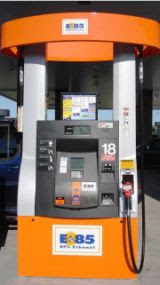DPT has worked with Ohio State University Agricultural Research and Development Center the past few years to develop an alternative source of natural rubber from the root of the Russian dandelion plant Taraxacum kok-saghyz, which is native to the former Soviet Republics of Kazakhstan and Uzbekistan.
The plans are to develop the process and standardize the product for possible uses in the tire industry. And they have received a $3 million grant to further their progress and to build a pilot plant.
This to me is certainly interesting as it would help to lower our petroleum consumption since according to the Rubber Manufacturers Association it takes about 7 gallons of crude oil to produce each automotive tire. But also very interesting is the fact that ethanol can also be produced from the dandelion roots.
McGee said the plan is to plant 1 million dandelion plants per acre, which will generate about 1 ton of rubber per acre. Likewise, an acre will yield about 245 gallons of ethanol.
I never would have thought that such a pesky plant could possibly provide solutions to our energy problems and petroleum dependence.
Source : Ashland Times-Gazette
 The
The  The Houston Chronicle is
The Houston Chronicle is  April ethanol production continues to increase reaching 562,000 barrels per day compared to 561,000 barrels per day in March. The total for the month ended up lower since April has only 30 days compared to 31 in March.
April ethanol production continues to increase reaching 562,000 barrels per day compared to 561,000 barrels per day in March. The total for the month ended up lower since April has only 30 days compared to 31 in March. The number of stations across the country selling E85 topped 1600 for the first time in June, reaching 1627 by months end. For the month 48 new location were added.
The number of stations across the country selling E85 topped 1600 for the first time in June, reaching 1627 by months end. For the month 48 new location were added.